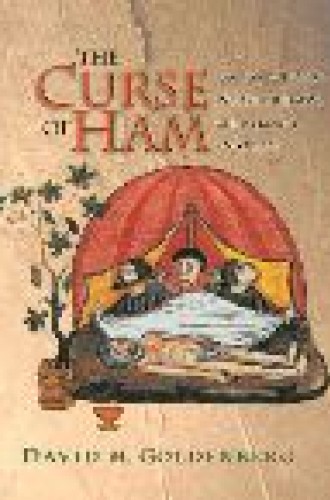The Curse of Ham: Race and Slavery in Early Judaism, Christianity, and Islam
How has the story of Noah and his three sons, Shem, Ham and Japheth, which contains no explicit reference to black people, become linked to the institution of slavery? David Goldenberg, a scholar of Jewish history and past associate director of the Annenberg Research Institute for Near Eastern and Judaic Studies at the University of Pennsylvania, explores this question. He asks how Jews of the ancient world perceived dark-skinned peoples, especially black Africans. Goldenberg’s impressive investigation of Jewish “perceptions,” which covers a 1,500-year period from ancient Israel (around 800 BCE) to the eighth century CE after the birth of Islam, is a comprehensive account of source material. However, the methodological lens Goldberg uses to analyze the data is beset by limitations.
The starting point of Goldenberg’s theoretical foundation is the “comprehensive” and “magisterial” work of the classicist Frank M. Snowden Jr., who argued that there was no racial prejudice in antiquity (Blacks in Antiquity: Ethiopians in the Greco-Roman Experience, 1970). Goldenberg models his book on Snowden’s thorough accumulation and examination of ancient sources, but recognizes that Snowden refuses to account for antiquity’s antiblack sentiment. Thus, Goldenberg appeals to the work of another classicist, Lloyd Thompson (Romans and Blacks, 1989), who also argues that there was no racial prejudice in antiquity but who does acknowledge the ancient world’s antiblack sentiment and describes it as an “ethnocentric reaction to strange and unfamiliar appearance.”
Though Goldenberg is clearly aware of the many different methodological proposals advanced since the publication of Snowden’s and Thompson’s books, he does not engage this important interdisciplinary research. Because attempting “to determine whether ancient Jewish society was racist” would lead him into a “theoretical quicksand,” he limits himself to exploring how ”ancient Jewish society look[ed] at the black African.” But he eventually does become mired in theoretical quicksand when he refuses to depart from Snowden’s notion that racist attitudes and racial ideologies are modern constructs.
Snowden’s work was valuable in its time because it presented a wide range of primary source material documenting Greco-Roman attitudes toward Ethiopians. Goldenberg’s work is valuable because it provides an unprecedented number of Jewish, Christian and Muslim sources documenting Jewish attitudes toward dark-skinned Africans and other blacks. But Goldberg’s explicit goal of understanding the connection between blackness and slavery, and his implicit desire to avoid and clear up mistakes made by earlier scholars, lead to his conclusions that “color did not matter” and “race did not matter” in the biblical and postbiblical sources he examines. That conclusion remains debatable.






